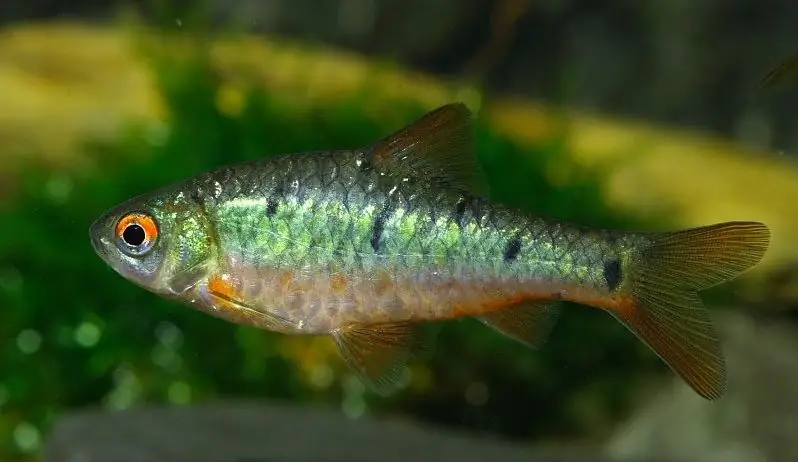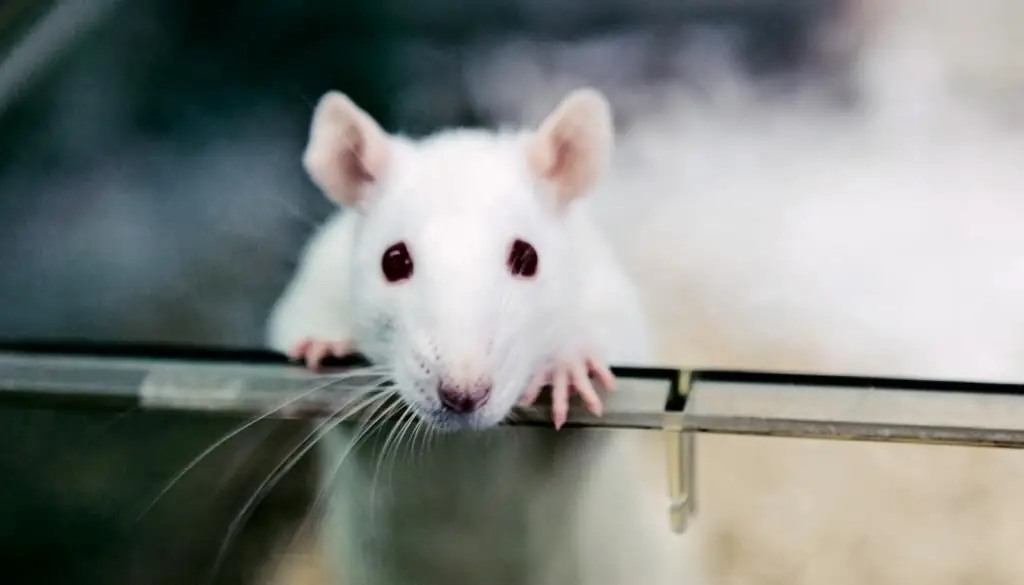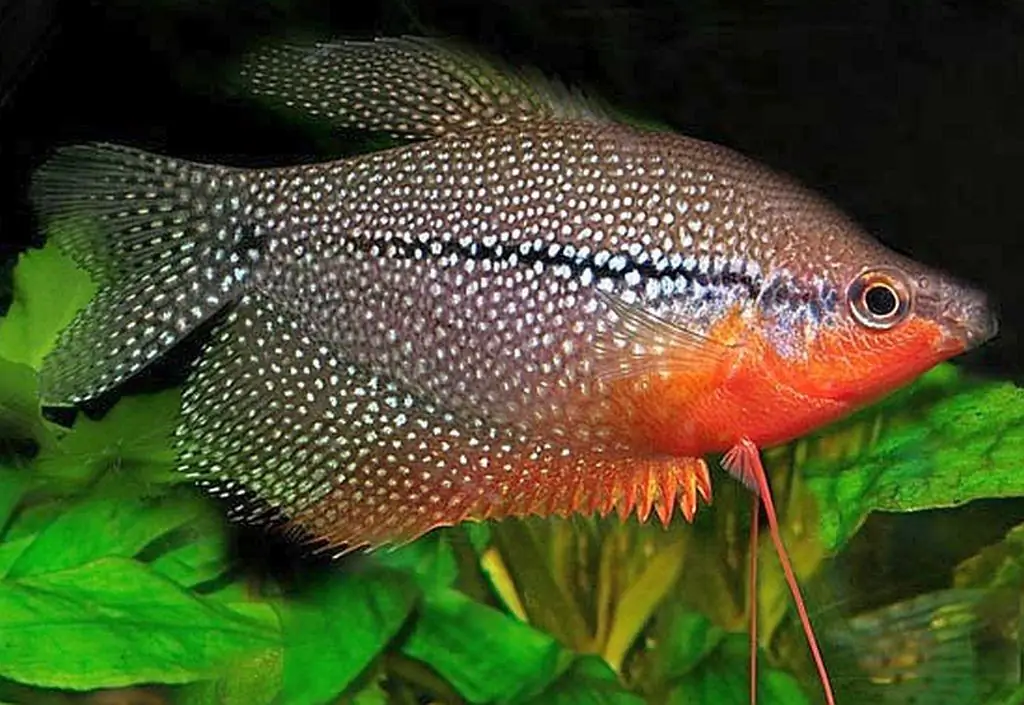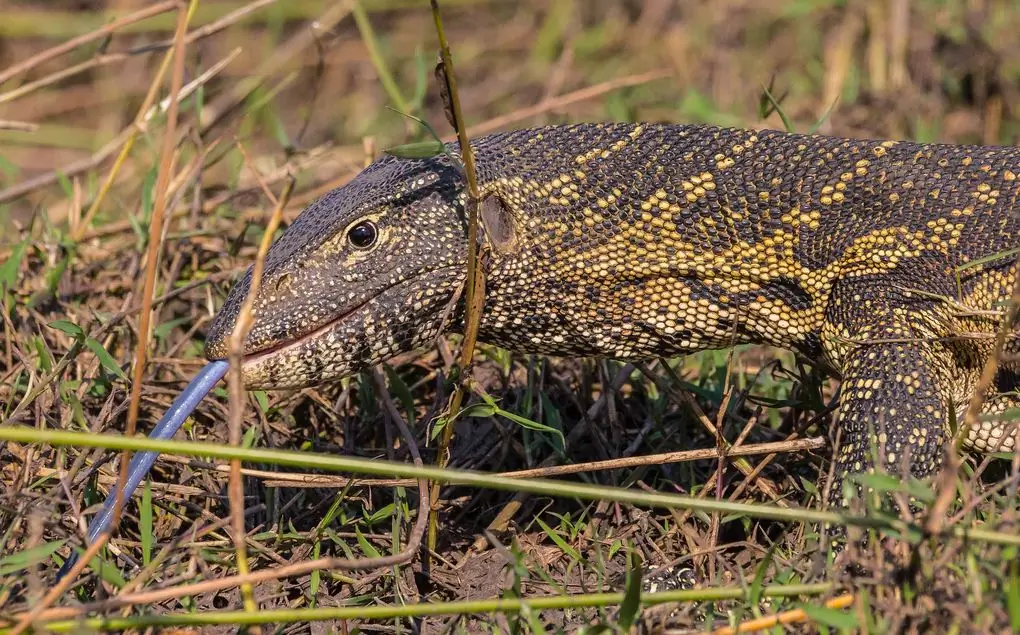2025 Author: Priscilla Miln | [email protected]. Last modified: 2025-01-22 17:55:26
The aquarium pangasius attracts many aquarists with its unusual appearance. In stores, their fry are sold as ornamental fish, while often silent about the problems that the new owner may face. In particular, it is often silent about the size that this fish reaches, regardless of the volumes in which it lives.
General information
The aquarium pangasius is very reminiscent of a shark in its appearance. Therefore, its second name is "shark catfish". "Freshwater shark" and "Siamese catfish" are two other common names for this fish. The average lifespan of a fish is 20 years. At the same time, the pangasius has a very large size. In nature, it can reach up to 130 cm in length, and the average weight of an adult fish is 44 kg. In captivity, it rarely grows more than 50-70 cm, but even at this size it is a very large aquarium fish that needs large volumes. Aquarium pangasius is a schooling fish. Feels bestyourself in a group of 5 individuals. Given the size of each fish and the love of shark catfish to frolic and swim, a flock needs a huge aquarium, which amateur aquarists can rarely afford.

Another catch is that aquarists are often fascinated by the appearance of pangasius juveniles. These are dark fish, shimmering with silver and very similar in appearance to sharks. But with age, their color changes. Adults become monotonously gray, while being quite large. In addition, over time, their activity decreases, and they become less interesting to observe. Therefore, you should think carefully before getting this fish as a pet. With its own unpretentiousness and interesting appearance, the aquarium pangasius is a difficult fish to keep, because it is difficult for it to set up optimal conditions for keeping.
Appearance and sexual dimorphism
Juvenile aquarium catfish Pangasius has a rather dark color. Long dark stripes run along the lateral line. The skin reflects light and shimmers beautifully. Adults have a solid gray color. The head is small, with large eyes. The body is thickened, devoid of scales. Unlike other types of catfish, there are no bone plates on the skin of the aquarium pangasius, so the fish is often injured. Small sharp teeth can be seen on the jaws. There are two pairs of barbels on the muzzle: the lower ones are longer than the upper ones. The fins are black or dark grey. The dorsal fin consists of 6 branched rays. It has one or two spikes. There are also spines on the pectoral fins. Tailbilobed fin. Below are photos of the aquarium pangasius.

Sexual dimorphism occurs only in adults, therefore, when buying juveniles, it is difficult to determine the sex of the fish. Females are larger than males and look much more powerful. In adulthood, they have a lighter body color.
Behavior
The aquarium pangasius is very shy. This is especially true for young people. Any noise, sudden movement, flash of light, can cause a panic attack in a flock. The fish will begin to rush around the aquarium and beat on everything around. With a sharp change in the conditions of detention or the introduction of a new neighbor, the fish are able to fall into a stupor. They freeze in place and don't move. From fear, they can pretend to be dead. In a state of stupor, they stay no more than half an hour. When the fish realizes that nothing threatens it, it will begin to study the surrounding space with interest.
Shark catfish are very active and therefore interesting to watch. He needs a lot of space to swim. Usually, fish scurry around the aquarium in flocks, and when they sense danger, they immediately try to hide.

Habitat
The fish was first described in 1878. In nature, it lives in the river basins located in Vietnam, Laos, and Thailand. It was from there that the fish got its distribution throughout Southeast Asia. There it is used on an industrial scale. In Asian countries, shark catfish is eaten.
Young fish are found in huge shoals. Adult fish live in small groups. They feed in nature on insect larvae, invertebrates, shrimps, vegetables and fruits.
Aquarium keeping

Since it is a schooling fish of large size, a large tank size is required to keep the aquarium pangasius. An aquarium with a volume of 400 liters is suitable for a flock of young animals. Over time, you will need an aquarium with a minimum volume of 1200 liters.
Fish is unpretentious regarding the conditions of detention. The optimum water temperature is 22-26 degrees. Fish have rather defenseless and sensitive skin. When damaged, fungus can form on it. That is why the cleanliness of the aquarium is very important for pangasius. Water changes should be done weekly for at least 30 percent of the total. The aquarium should have a powerful filter that will create a current. Aeration required. The equipment inside the aquarium should be hidden with decorations, because shy fish can break it in a panic attack.
Inside the aquarium, you need to put shelters in which nervous juveniles can hide. You can put sand or edged gravel on the bottom. The aquarium pangasius loves to dig the ground, so you need to plant plants with a well-developed root system in it. You need a lot of free space for swimming. From fright, the pangasius can also jump out of the aquarium, so it should be covered with a lid. In bright light, the fish can be very nervous, because it is undesirable.
Feeding

Aquarium pangasiusquite voracious, so care must be taken not to overfeed the fish. One day a week you can not feed the fish at all, to prevent obesity.
Shark catfish can be fed dry, frozen and live food. It is necessary to give herbal supplements. For feeding, you can use the tubifex, bloodworm, small invertebrates. You need to feed in small portions 2-3 times a day. Food should be given as much as the fish can eat within 5 minutes. In addition, aquarium pangasius eat only the food that is in the middle layers of the water. Fish may refuse to eat due to excessively bright lighting. In this case, she feels defenseless, and therefore nervous. During feeding, dim the lights. With age, fish lose their teeth and begin to eat only plant foods. For feeding, you can use lettuce leaves, thin slices of zucchini, grated cucumbers.
Compatibility

Aquarium pangasius is a schooling fish. For a comfortable existence, it is best to acquire a group consisting of at least five individuals. This is a very shy fish, which, from any sudden noise, begins to rush about in a panic. At the same time, she is able to harm not only herself, but also other neighbors in the aquarium. Therefore, you should not frighten the fish once again in order to avoid unnecessary injuries.
This is a rather friendly fish, but you should not settle with it fish that the shark catfish can swallow. Larger fish can irritate the pangasius, cause panic attacks, because of which the fish willget hurt. Shark catfish is better to settle with commensurate peace-loving fish: cichlids, Labeo, large barbs. With timely and high-quality feeding, gourami and iris can be added to the aquarium. Aquarium pangasius live in the middle layers of the water, therefore it is worth settling with them fish that live in the lower layers. They will pick up food that has fallen to the bottom, thereby clearing the soil of food debris.
Reproduction
Pangasius aquarium fish juveniles are imported from their homeland. And all because it is almost impossible to achieve fish reproduction at home. It is too difficult to recreate the necessary conditions for spawning. It is easier to supply fish from places where it is bred on an industrial scale. Fish are bred in huge artificial reservoirs, or fry are caught in nature, and then grown.
Males are ready to breed from two years old, and males from three. Spawning continues from early summer to late autumn. Fish rush upstream to the spawning ground. Females lay their eggs in dense algae. At a time, one female is able to sweep more than one million eggs. The fry are born after a couple of days.
Possible diseases

Pangasius aquarium fish needs good water filtration. Due to heavy pollution, it can lose activity and get sick. The aquarium pangasius is quite often injured when it rushes around the aquarium in fright.
One of the most common bacterial infections in catfish is pangasius bacillary necrosis. Its main symptoms are:hemorrhage in the eyes and fins; cell necrosis; spots on the liver, kidneys and spleen. Antibiotics are used to treat it.
Pangasius can suffer from jaundice, the main symptom of which is the yellow color of the meat. To cure the fish, they give antibiotics along with the food, besides, in this case, they try to improve the quality of the water.
Bacterial hemorrhagic septicemia is an infectious disease. Its main symptoms are abdominal distention, bleeding around the eyes, fins and on the body. Antibiotics and improved living conditions help to cope with it.
Thus, the pangasius aquarium shark is a beautiful and very large fish. It is unpretentious, but for its maintenance at home you need a very large aquarium. The fish are peaceful, but it is worth settling them with proportionate species of fish. Since the shark catfish is very shy, there should be no sharp decorations in the aquarium that it can get hurt on. Under the right conditions and a good varied diet, fish can live up to 20 years.
Recommended:
Large aquarium fish: names, description with photo, compatibility and content rules

Thousands of species of fish live in the waters of the earth's seas and oceans, in rivers and lakes of the continents. Amateur aquariums contain not only wild species, but also those modified by humans through selection and hybridization. Moreover, fish farmers do not refuse to admire not only delicate bright small handsome fish. Large aquarium fish also arouse their passionate interest
White rat with red eyes: description with photo, content features, behavior and care

Planning to get a rat? These are wonderful animals. Do you know how to properly maintain them, and what is needed for this? Do not rush to run to the pet store for a rodent or call the breeder. Read the article. It tells about rats with red eyes, their characteristics, maintenance and care. The last two words can be attributed to any rats
Gourami: spawning, reproduction, description with photo, life cycle, characteristic features and content features

Gourami are extremely popular and easy to keep freshwater fish. Their reproduction is easy to achieve in captivity. For spawning, gourami fish make small nests. Consider the most popular types of gourami, features of their content, natural range, reproduction
Feeding geese: breeding features, feeding norms and diet, advice from experienced farmers

What should be the feeding of geese for their full development and growth? This question is asked by every novice farmer. Birds are unpretentious to feed, but certain rules should be followed in order to make a balanced diet. Only in this case, you can avoid problems with the he alth of domestic birds. In addition, not all grass is suitable for geese - some plants are poisonous for these birds
Nile monitor lizard: habitat, photo and description, content features, care and nutrition

The monitor lizard family has a lot of representatives. One of them is the Nile monitor, widespread on the African continent. The impressive size and formidable appearance of the animal do not prevent it from being a pet for those people who love the exotic. Keeping a lizard in the walls of the house requires compliance with special conditions. It is this unusual animal that will be discussed in the article

